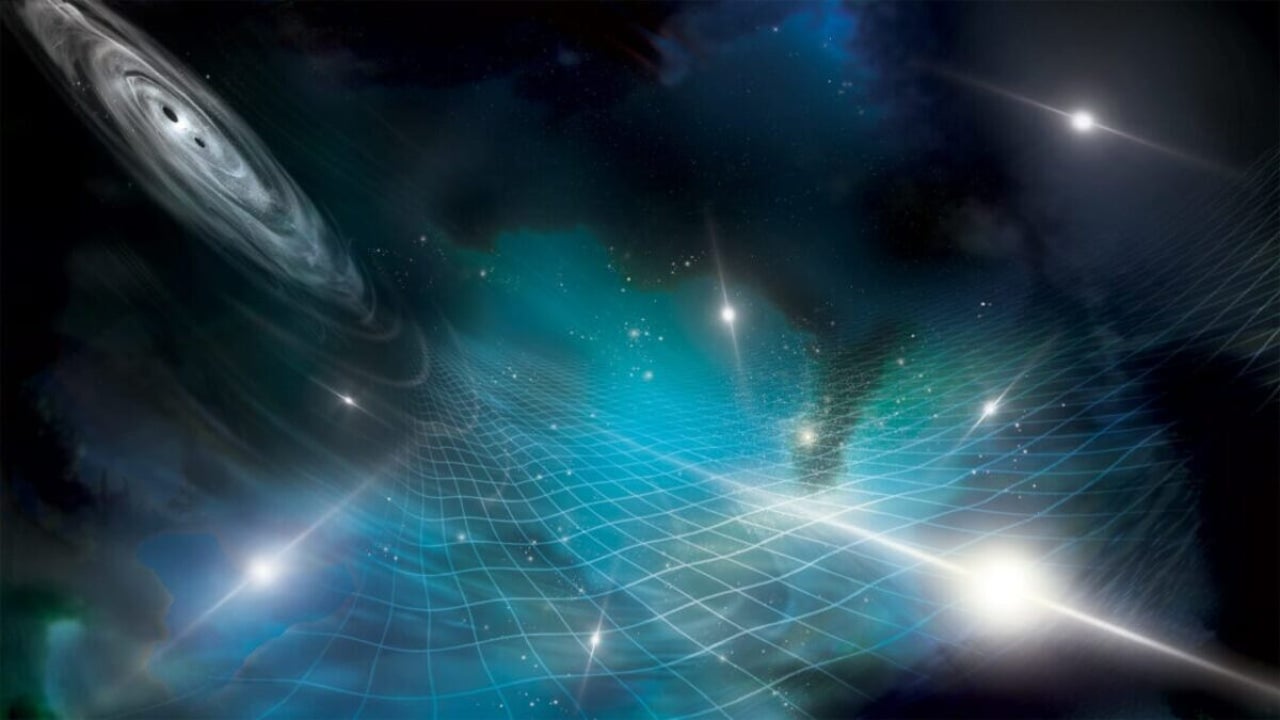News
The Universe’s Humming Riddle: Groundbreaking Research Uncovers Clues to Its Source
A "cosmic dance" of black holes would be behind it all.

- August 19, 2023
- Updated: March 7, 2024 at 2:49 PM

The universe is not static or silent, as is commonly believed. It moves, expands and… vibrates. And this is where gravitational waves play an important role: tiny ripples in the fabric of space and time that occur when massive objects accelerate or collide.
Gravitational waves are generally very difficult to detect because they are usually very short and weak, and get lost in the background noise of the universe.
For this reason, until now only some of them have been captured with very sensitive instruments such as the Laser Interferometer Gravitational-Wave Observatory (LIGO), which measures the distortions caused by the waves in two laser light beams separated by kilometers.
But it turns out that there is another type of gravitational wave that is much longer and more persistent, and that fills the entire universe with a constant “gravitational hum“. These waves are so low that we can’t hear them even with LIGO, so a team of scientists at NANOGrav has had to resort to an unconventional type of “tool”: pulsars.
Yes, humans have used neutron stars to detect gravitational waves. But how is this possible?
This is because pulsars emit pulses of radiation every time they rotate about themselves, and act as very precise cosmic clocks.By measuring the time it takes for the pulses to reach Earth, the variations caused by gravitational waves in space and time can be detected.
Now, after spending 15 years searching for the gravitational hum of the universe, this team of researchers has finally found it. After analyzing a whopping 68 pulsars, the scientists have found a coherent and statistically significant signal indicating the presence of low-frequency gravitational waves.

And where do these waves come from? Well, the most likely hypothesis is that they originate from the “cosmic dance” of supermassive black holes, the largest and most powerful black holes in existence. Astronomers believe that at the center of every galaxy there is one of these titans, and that they can merge when two galaxies collide.
The merger process can last millions or billions of years, and during that time the black holes emit gravitational waves that propagate throughout the cosmos.
The promising results of this study could be the first building block in the future construction of a global network of gravitational wave detectors that will allow researchers to better identify the sources and properties of these waves.
A system that would also allow them to search for other possible causes of gravitational hum, such as cosmic strings (topological defects in space-time) or cosmic inflation (an accelerated expansion phase of the universe shortly after the Big Bang).
Some of the links added in the article are part of affiliate campaigns and may represent benefits for Softonic.
Publicist and audiovisual producer in love with social networks. I spend more time thinking about which videogames I will play than playing them.
Latest from Pedro Domínguez
You may also like

Porsche launches pilot program to recycle EV batteries and recover valuable materials
Read more

Hyundai IONIQ 5 Breaks Records With Over 360,000 Miles on Original Battery
Read more

We know the release date of the second season of Sobre ruedas
Read more

This free ebook reader deserves a chance: you’re going to love it
Read more

The drama of falling in love for the first time: The Blue Box will have a second season to continue telling
Read more

It's one of the most violent movies in recent years and you have it on Netflix
Read more